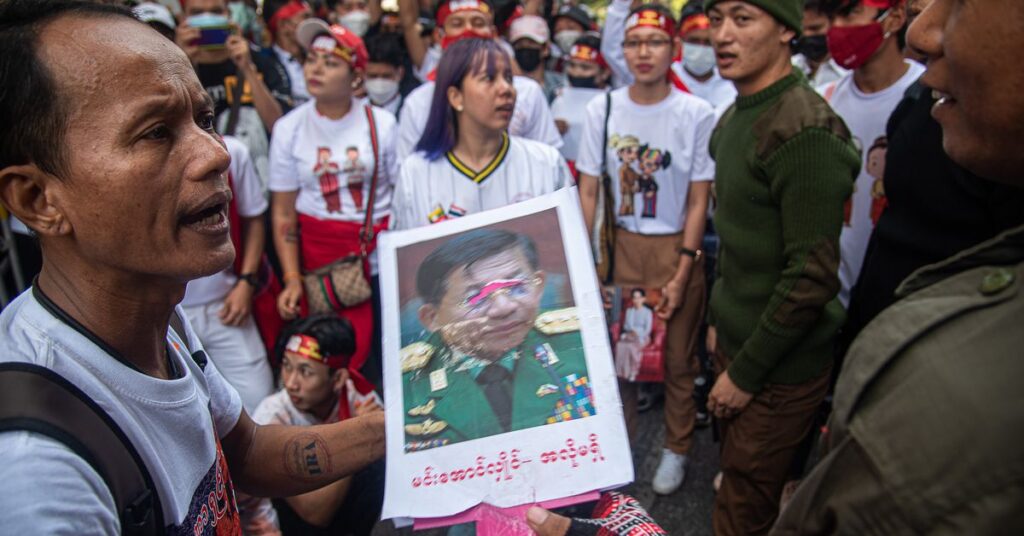The death toll from an attack on civilians by Myanmar’s military junta continues to rise, reaching around 170 people including 30 children. Tuesday’s airstrike on the opening of an administrative office in the rebel-held village of Pazigyi is the deadliest so far since the junta took power in a coup just over two years ago.
Tuesday’s attack exemplifies the regime’s indiscriminate violence against civilians, including women and children; two years on, 3,000 civilians have reportedly been killed by the Tatmadaw, though the number of civilian deaths caused by both the junta and the resistance is likely higher. The airstrike is also indicative of the junta’s determination to retain power no matter the cost, despite its inability to maintain territorial control.
Though Myanmar has a long history of brutal and repressive military rule, the stunning violence of the current regime has made it “the worst regime in Southeast Asia since the Khmer Rouge,” according to former US Ambassador to Myanmar Scot Marciel, referring to Pol Pot’s murderous dictatorship of the 1970s and 1980s.
The junta, or Tatmadaw as it’s called in Myanmar, has solidified the country’s status as a pariah state given its repressive tactics and scorched-earth military attacks. Yet it has stated its plans to hold elections this year in order to legitimize its control of the government on the international stage — or at least make an attempt to do so.
In addition to its scorched-earth attacks, the junta has chipped away at any semblance of democracy; last month, the government dissolved the National League for Democracy and 39 other opposition groups, the New York Times reported at the time. It also previously jailed the NLD’s leader and longtime symbol of democracy Aung San Suu Kyi for 33 years — almost certainly a life sentence for the 77-year-old.
Meanwhile opposition to military rule has morphed from protests to outright conflict, as armed factions aligned with…
Read the full article here





